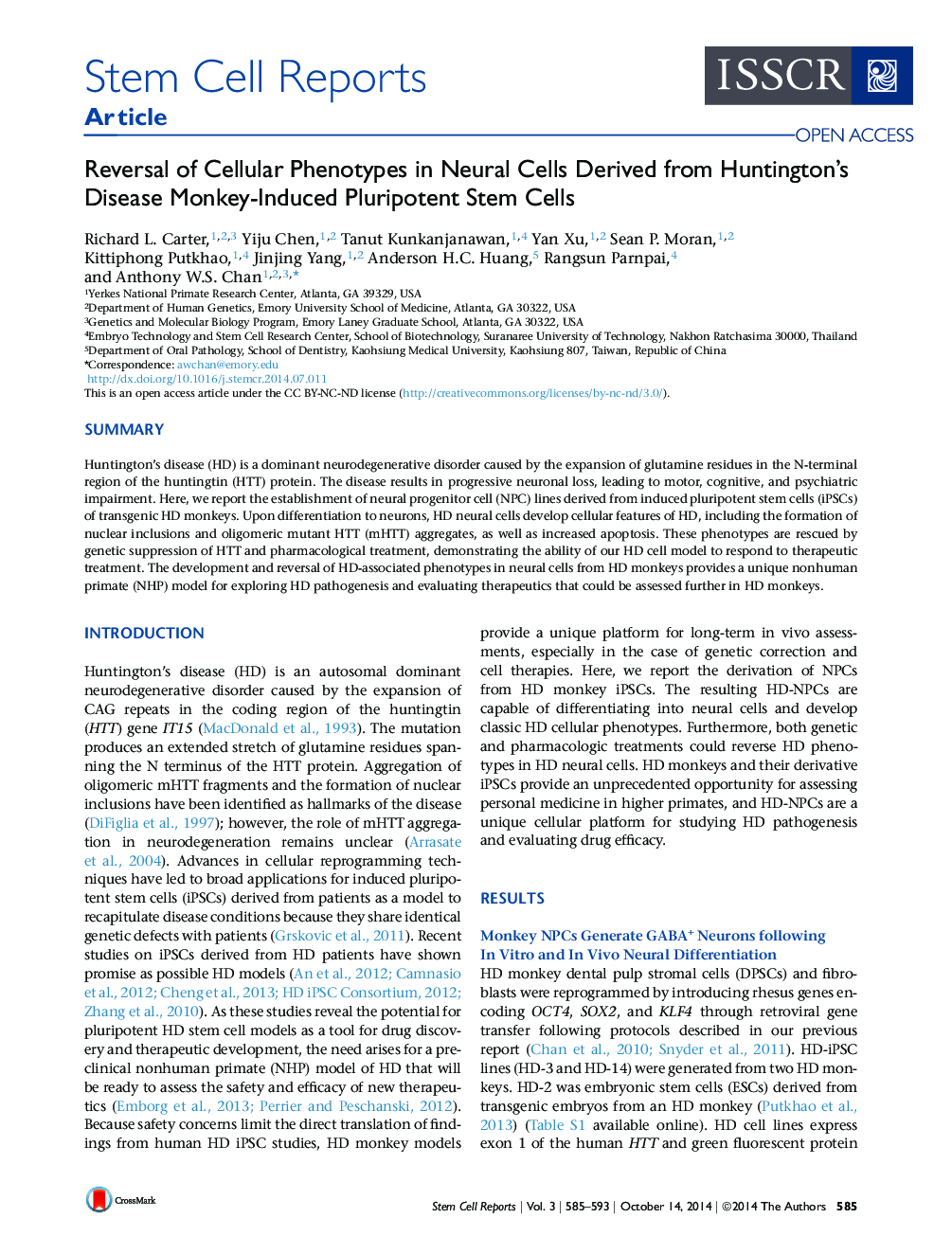| Article ID | Journal | Published Year | Pages | File Type |
|---|---|---|---|---|
| 2093796 | Stem Cell Reports | 2014 | 9 Pages |
•Neural progenitor cell lines were derived from HD monkey iPSCs•HD monkey neural progenitor cells are capable of differentiating into GABA+ neurons•HD monkey neural cells develop HD-associated cell phenotypes•HD monkey neural cells respond to genetic correction and pharmacological treatments
SummaryHuntington’s disease (HD) is a dominant neurodegenerative disorder caused by the expansion of glutamine residues in the N-terminal region of the huntingtin (HTT) protein. The disease results in progressive neuronal loss, leading to motor, cognitive, and psychiatric impairment. Here, we report the establishment of neural progenitor cell (NPC) lines derived from induced pluripotent stem cells (iPSCs) of transgenic HD monkeys. Upon differentiation to neurons, HD neural cells develop cellular features of HD, including the formation of nuclear inclusions and oligomeric mutant HTT (mHTT) aggregates, as well as increased apoptosis. These phenotypes are rescued by genetic suppression of HTT and pharmacological treatment, demonstrating the ability of our HD cell model to respond to therapeutic treatment. The development and reversal of HD-associated phenotypes in neural cells from HD monkeys provides a unique nonhuman primate (NHP) model for exploring HD pathogenesis and evaluating therapeutics that could be assessed further in HD monkeys.
Graphical AbstractFigure optionsDownload full-size imageDownload as PowerPoint slide
